These 5 plants are guaranteed to wow as they unexpectedly paint your yard in fiery hues in fall – and we have expert tips on how to grow them
You'll be amazed at just how much these plants change come fall
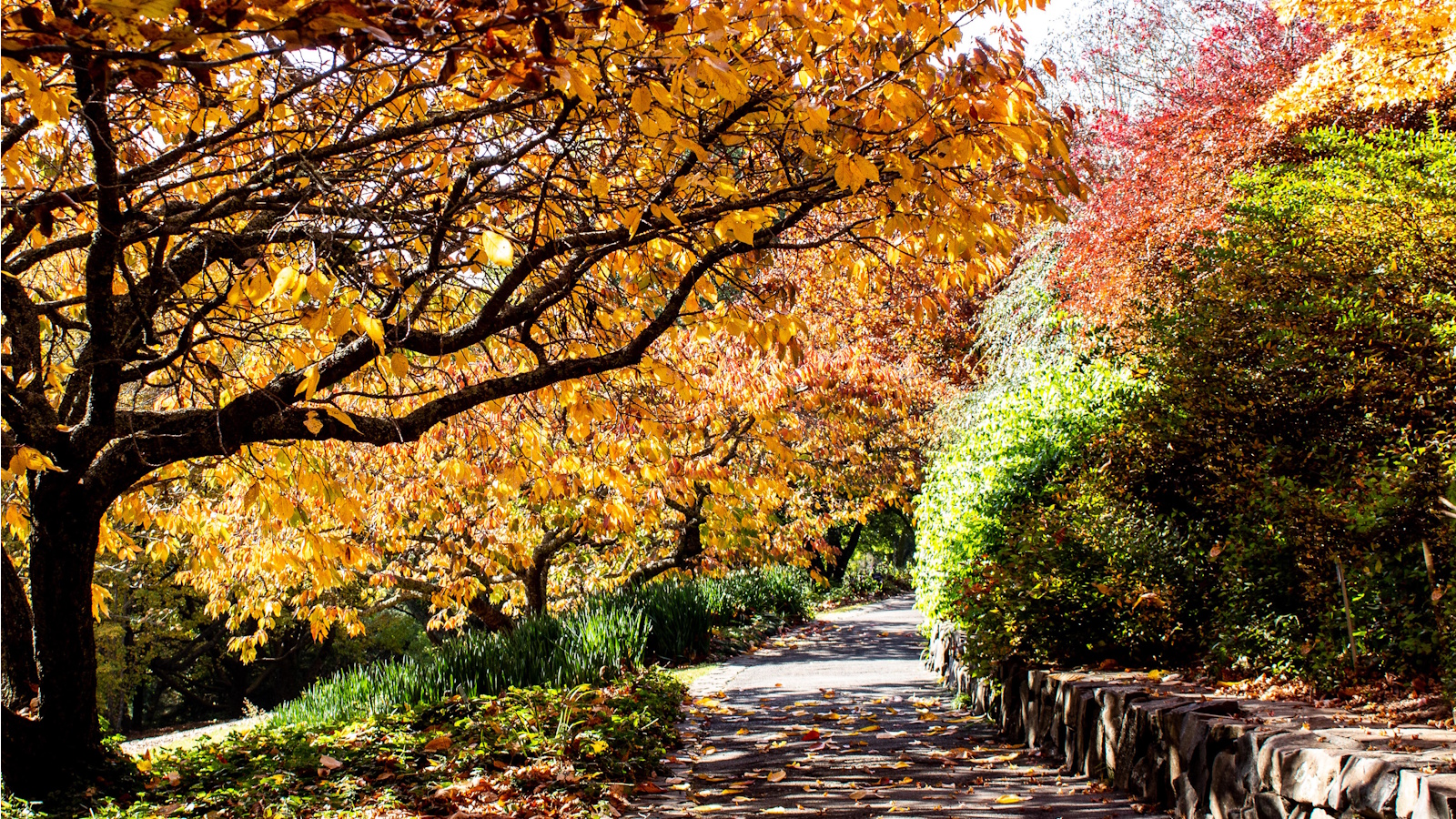

Watching the plants in my yard change color ignites an excitement for the cozy fall days ahead. One of the greatest joys is spotting a plant in beautiful fiery and bronze hues that I didn't expect to see, previously disguised with luscious green leaves and neutral blooms.
These unexpected plants for fall color are some real gems to have in your fall garden. Not only do they dazzle with their bright foliage in the latter half of the year, they also provide interest earlier in the year, too, often with spring and summer blooms.
Alongside the best plants for fall color, these unexpected plants for fall color can create a vibrant garden landscape for this chillier season. Here, I take a look at five top choices, plus reveal some expert tips on growing them successfully.
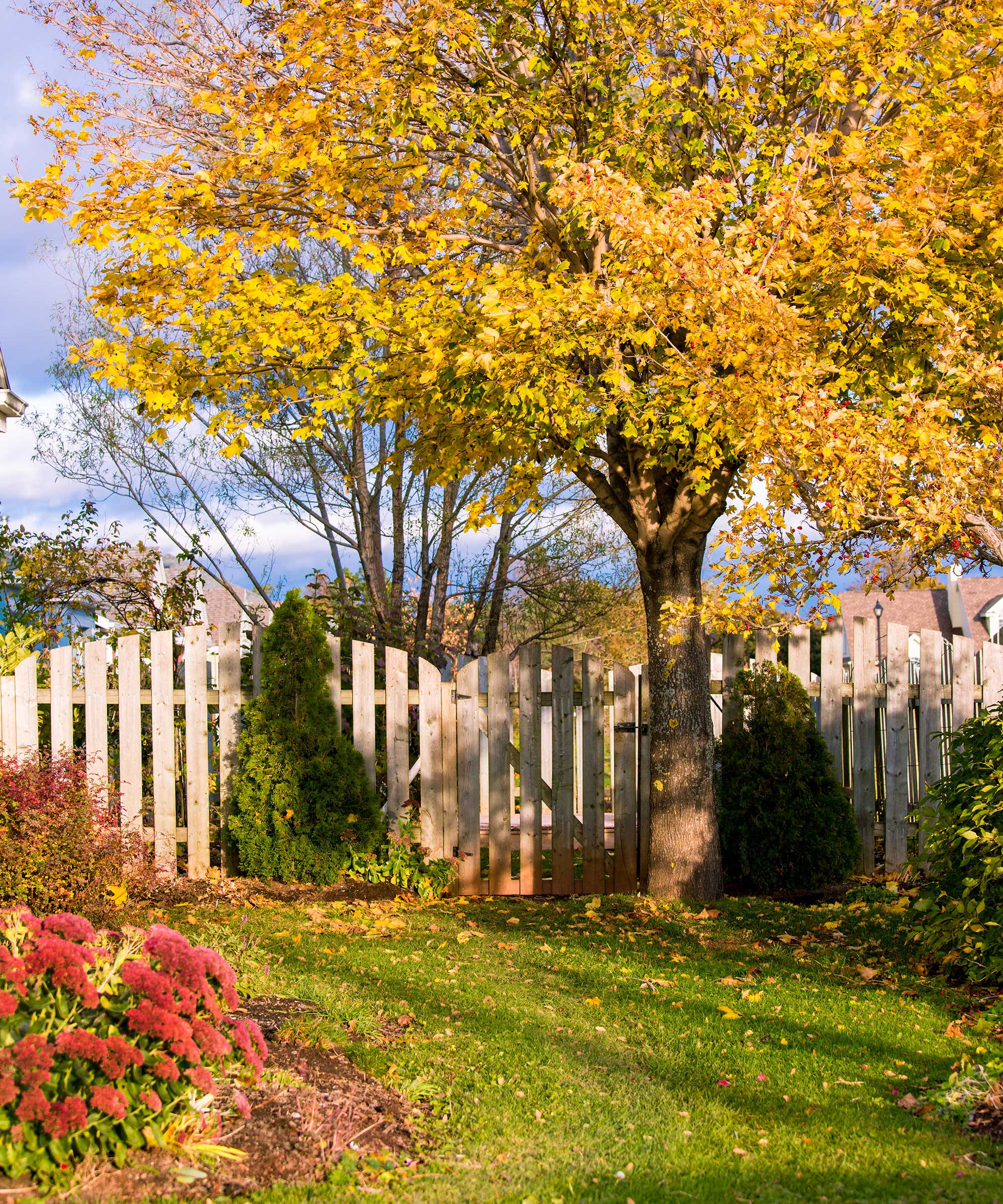
5 unexpected plants for fall color
Unexpected plants for fall color can be found in all corners of the garden, from towering trees to fall flowers for pots, and even grasses. All of them go through a magnificent transition as summer ends, turning red, orange, yellow, and bronze.
1. Sassafras
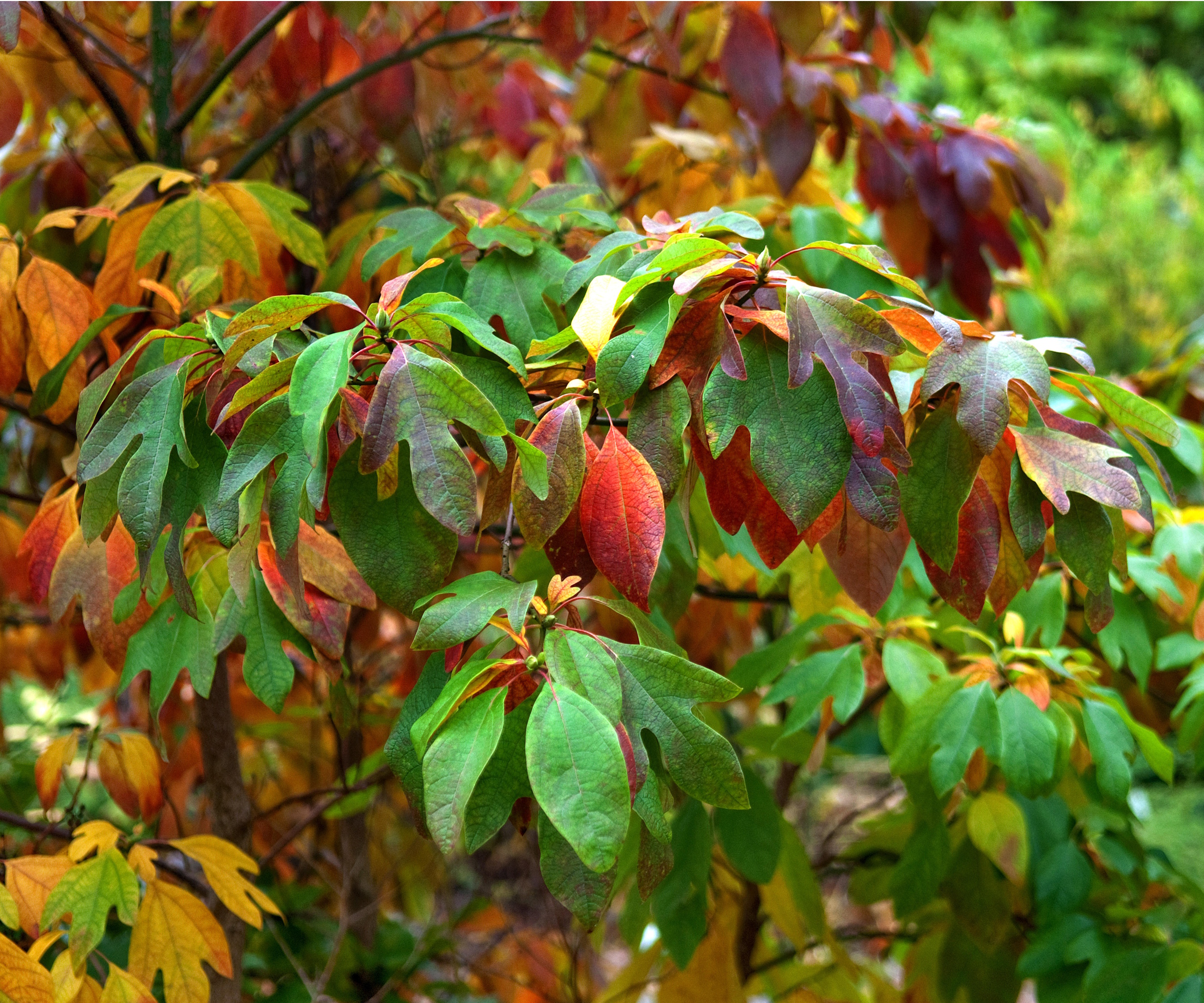
With yellow-green leaves through spring and summer, you would never assume sassafras would turn into a mixture of orange, red, and even purple colors by the time fall comes around.
It's distinctive lobed leaves and lemon-scented spring blooms also make it attractive in the warmer months. By late fall, this tree even turns into one of the best trees and shrubs for fall berries, with dark blue berries emerging.
It's best to grow sassafras across US hardiness zone 4 to zone 9 where it enjoys full sun to partial shade.
Design expertise in your inbox – from inspiring decorating ideas and beautiful celebrity homes to practical gardening advice and shopping round-ups.
'A well-draining, clay, slightly acidic soil type is recommended,' says Plantum plant expert Marina Prokaten.
'The sassafras can grow multiple trunks, so if that doesn’t suit you, you can reduce it to one by pruning in the early stages of its life,' she adds.
Do this by using essential pruning tools (like these bypass pruning shears Amazon) to remove suckers at the base of the tree during early spring.
You can find a young sassafras tree to plant from Amazon.

Marina Prokaten is a resident plant expert for the Plantum app, which helps users identify plant species, diagnose their conditions, and get specific care advice. She has three years of experience consulting on botany-related topics for Plantum.
2. Japanese forest grass

One of the best ornamental grasses for winter, Japanese forest grass goes through a beautiful phase in fall before reaching its golden brown look for winter.
In summer, the mounding clumps of grass are yellow-green and often have creamy variegation. As fall settles in, the blades of the grass turn bright yellow and orange, with sprays of pale green flowers.
When growing Japanese forest grass, choose a partial shade position and maintain evenly moist soil. They are best suited to US hardiness zone 5 to zone 9.
Hold off on pruning until early spring to make the most of the bronze foliage through fall and winter. You can then use tools like these loppers from Amazon to cut it right back to the base.
Shop for Japanese forest grass at Nature Hills.
3. Spirea
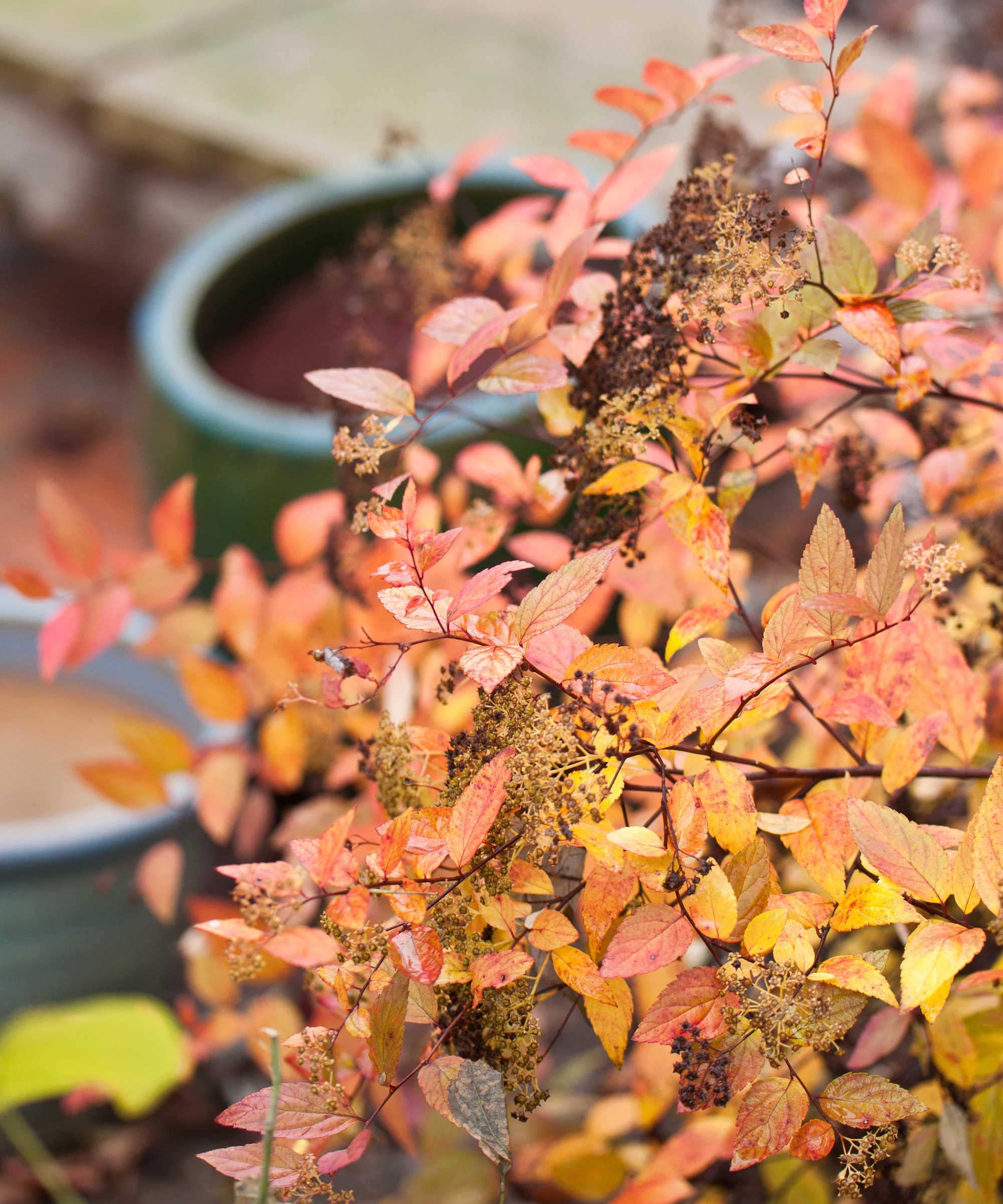
If you're looking to fill in gaps of your fall borders, consider adding spirea (suited to US hardiness zone 3 to zone 9). These shrubs are popular not only for the beautiful fiery shades they turn in fall, but also the blooms that appear in summer.
'You can get blooms in shades of white, pink, and red, and they are all very popular with pollinators,' says Drew Swainston, Homes & Gardens' Gardens Content Editor.
'Some spirea varieties also have glorious fall color. The likes of Bridal Wreath Spirea (Spiraea prunifolia), Birchleaf Spirea (Spiraea betulifolia), and Japanese Spirea (Spiraea japonica) all turn stunning shades of yellow, red, or orange come the fall,' he adds.
Explore the spirea varieties available on Amazon.
Drew notes these shrubs are low-maintenance and easy to care for once established in your yard.
'Give spirea a good mulch in the fall with organic material like compost, wood chips, or pine needles,' Drew advises. 'This 2-3 inch layer will retain moisture in the soil, suppress weeds, and insulate the roots against the winter frosts.'

Drew qualified as a journalist and wrote for many websites and publications, before studying for a horticulture qualification. He worked as a professional gardener for several years, specializing in kitchen gardening. He's now bringing his expertise and passion to Homes & Gardens as a member of our team.
4. Arkansas blue star
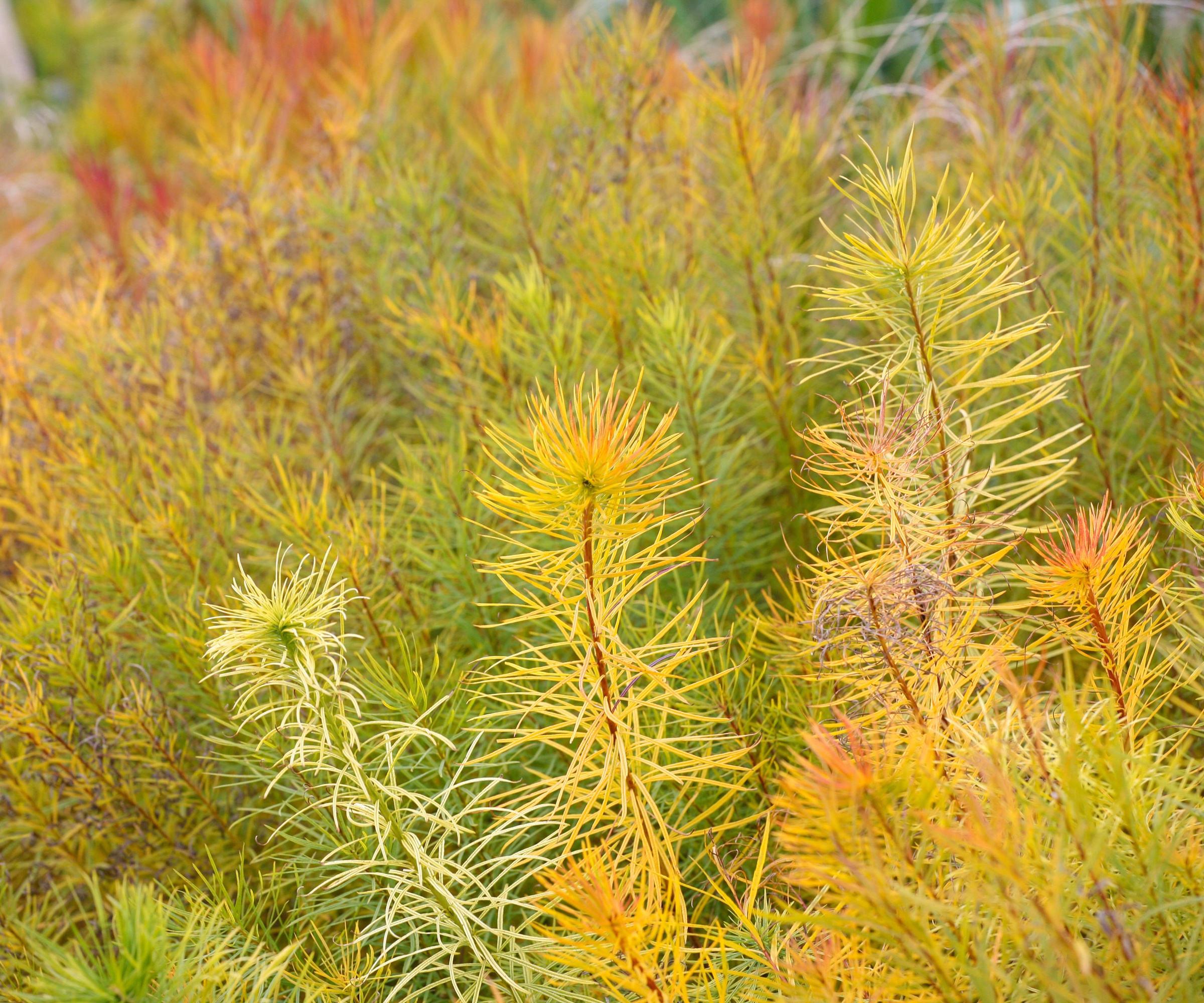
With dainty blue star-shaped flowers on show from late spring to summer, Arkansas blue star is certainly one of the best unexpected plants for fall color.
It's wispy foliage transitions from vivid green to bright yellow and orange in fall, appearing like a fuzzy sponge from a distance.
It's best to grow Arkansas blue star across US hardiness zones 4 to 9. It prefers a well-draining soil, even growing well in sand and loam soil types.
They tend to stop flowering by early summer, which is when you should prune Arkansas blue star by six to eight inches. This will boost foliage growth through the rest of summer, creating a bushier habit for fall and winter.
Find an Arkansas blue star live plant from Amazon.
5. Blue leadwort
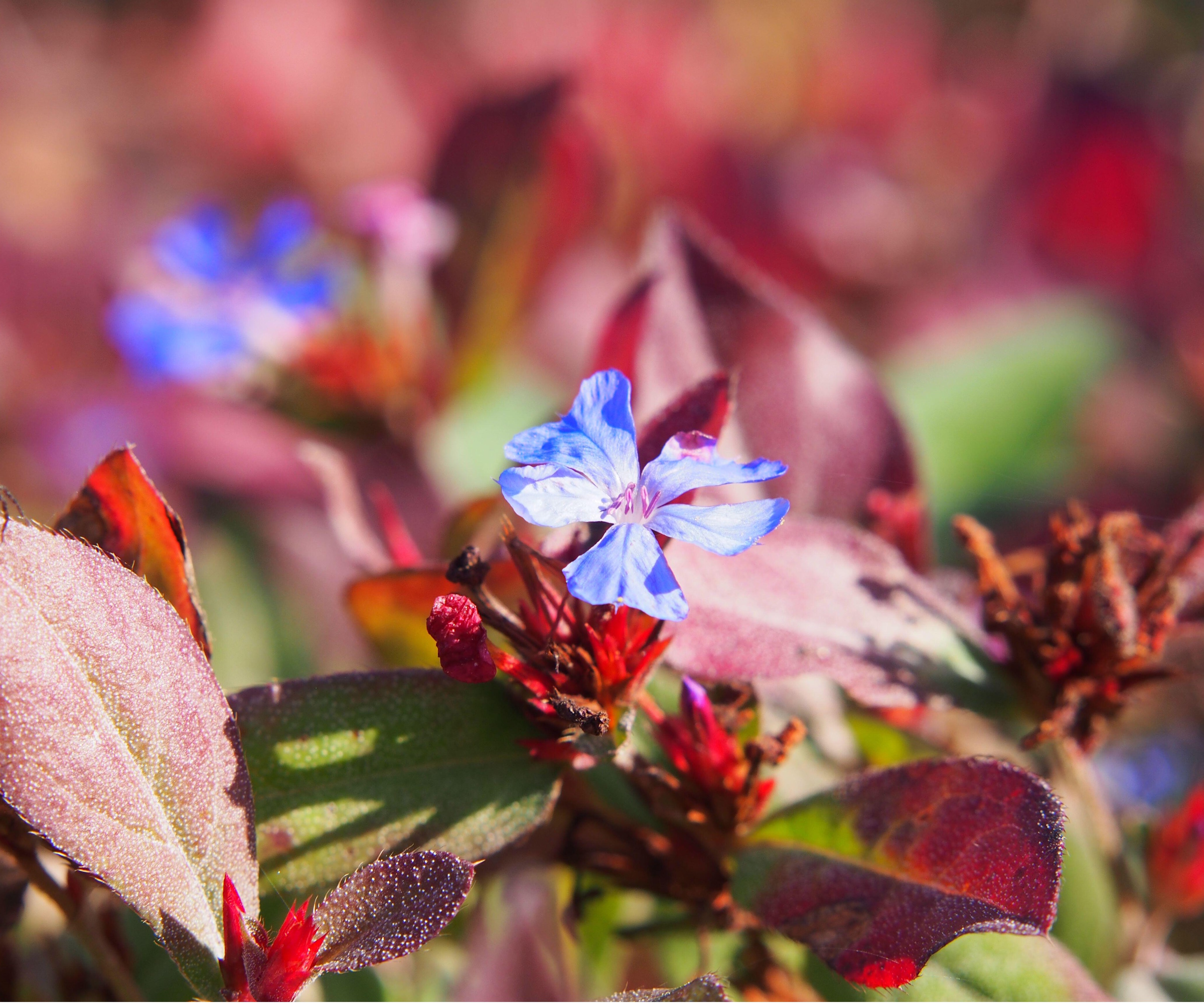
When blue leadwort (plumbargo) blooms first appear in summer, they sit against a background of green foliage. But, as the colder temperatures arrive, the leaves become a marbled red-green.
What's particularly remarkable about the look of blue leadwort in fall is the fact its blue flowers remain right through October. This creates a striking contrast to the red foliage that turns richer as the weeks progress.
This long flowering period makes blue leadwort one of the best flowering shrubs, along with its low-maintenance nature. It doesn't even need deadheading, as the flowers are self-cleaning and drop off once spent.
To achieve the best fall color, plant blue leadwort in well-draining soil. Too-wet can cause rot, resulting in the foliage drooping, curling, and falling off before it has a chance to turn red.
Find a blue leadwort plant from Amazon.
FAQs
Is October a good time to plant trees and shrubs?
Yes, October is a great month to add new trees and shrubs to your yard. This is because the soil is still warm and workable, encouraging root establishment ahead of frostier temperatures. For immediate impact, consider planting shrubs and trees for fall color this month.
One of the best things about adding new plants to your yard is watching how they change throughout the year, surprising you with different colors in different seasons.
For an extra hit of fall foliage galore, check out our report on the Farmers' Almanac peak fall foliage map to find out where to go to see the best colors this season.

Tenielle is a Gardens Content Editor at Homes & Gardens. She holds a qualification in MA Magazine Journalism and has over six years of journalistic experience. Before coming to Homes & Gardens, Tenielle was in the editorial department at the Royal Horticultural Society and worked on The Garden magazine. As our in-house houseplant expert, Tenielle writes on a range of solutions to houseplant problems, as well as other 'how to' guides, inspiring garden projects, and the latest gardening news. When she isn't writing, Tenielle can be found propagating her ever-growing collection of indoor plants, helping others overcome common houseplant pests and diseases, volunteering at a local gardening club, and attending gardening workshops, like a composting masterclass.
You must confirm your public display name before commenting
Please logout and then login again, you will then be prompted to enter your display name.